A particle of mass m = 1.0 kg is free to move along the x axis. It is acted upon by a force which is described by the potential energy function represented in the graph below. The particle is projected towards left with a speed v, from the origin. Find minimum value of v for which the particle will escape far away from the origin.
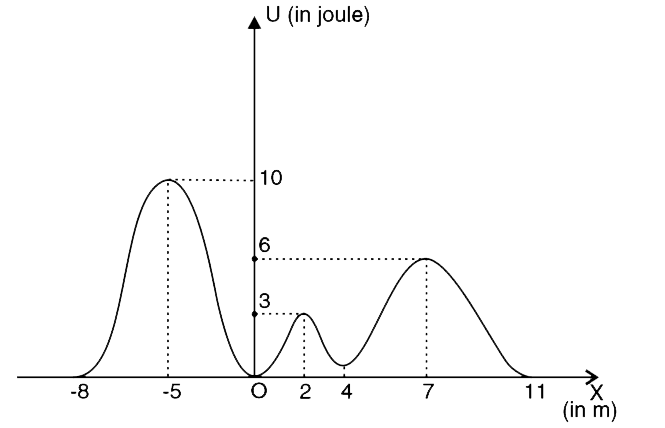
The correct Answer is:2√3m/s
Step by step video, text & image solution for A particle of mass m = 1.0 kg is free to move along the x axis. It is acted upon by a force which is described by the potential energy function represented in the graph below. The particle is projected towards left with a speed v, from the origin. Find minimum value of v for which the particle will escape far away from the origin. by Physics experts to help you in doubts & scoring excellent marks in Class 11 exams.
Updated on:21/07/2023Topper's Solved these Questions
Similar Questions
A particle is projected from origin with speed u. Find the minimum value of u if the particle passes through a poiny P(a,√3a).
View SolutionA particle of mass m = 1 kg is free to move along x axis under influence of a conservative force. The potential energy function for the particle is U=a[(xb)4−5(xb)2] joule
Where b = 1.0 m and a = 1.0 J. If the total mechanical energy of the particle is zero, find the co-ordinates where we can expect to find the particle and also calculate the maximum speed of the particle.
View Solution
Knowledge Check
A point particle of mass 0.5 kg is moving along the x-axis under a force described by the potential energy V shown below. It is projected towards the right from the origin with a speed v. What is the minimum value of v for which the particle will escape infinitely fasr away from the origin ?
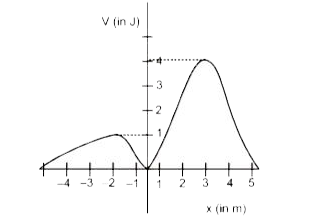 A2√2ms−1B2ms−1C4ms−1DThe particle will never escape
A2√2ms−1B2ms−1C4ms−1DThe particle will never escapeA particle free to move along x-axis is acted upon by a force F=−ax+bx2whrteaandbarepositiveconstants.For ximplies0, the correct variation of potential energy function U(x) is best represented by.
A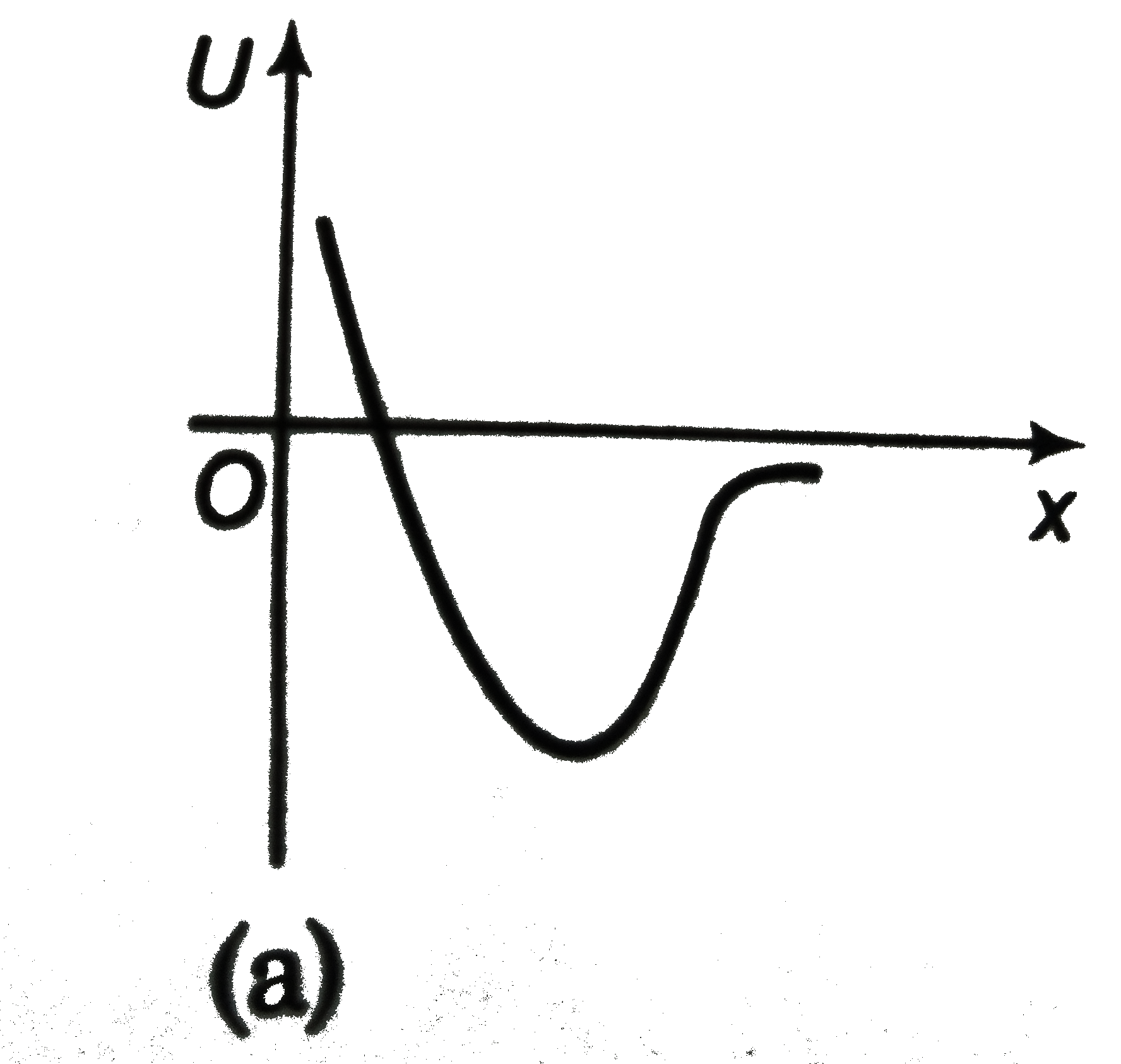 B
B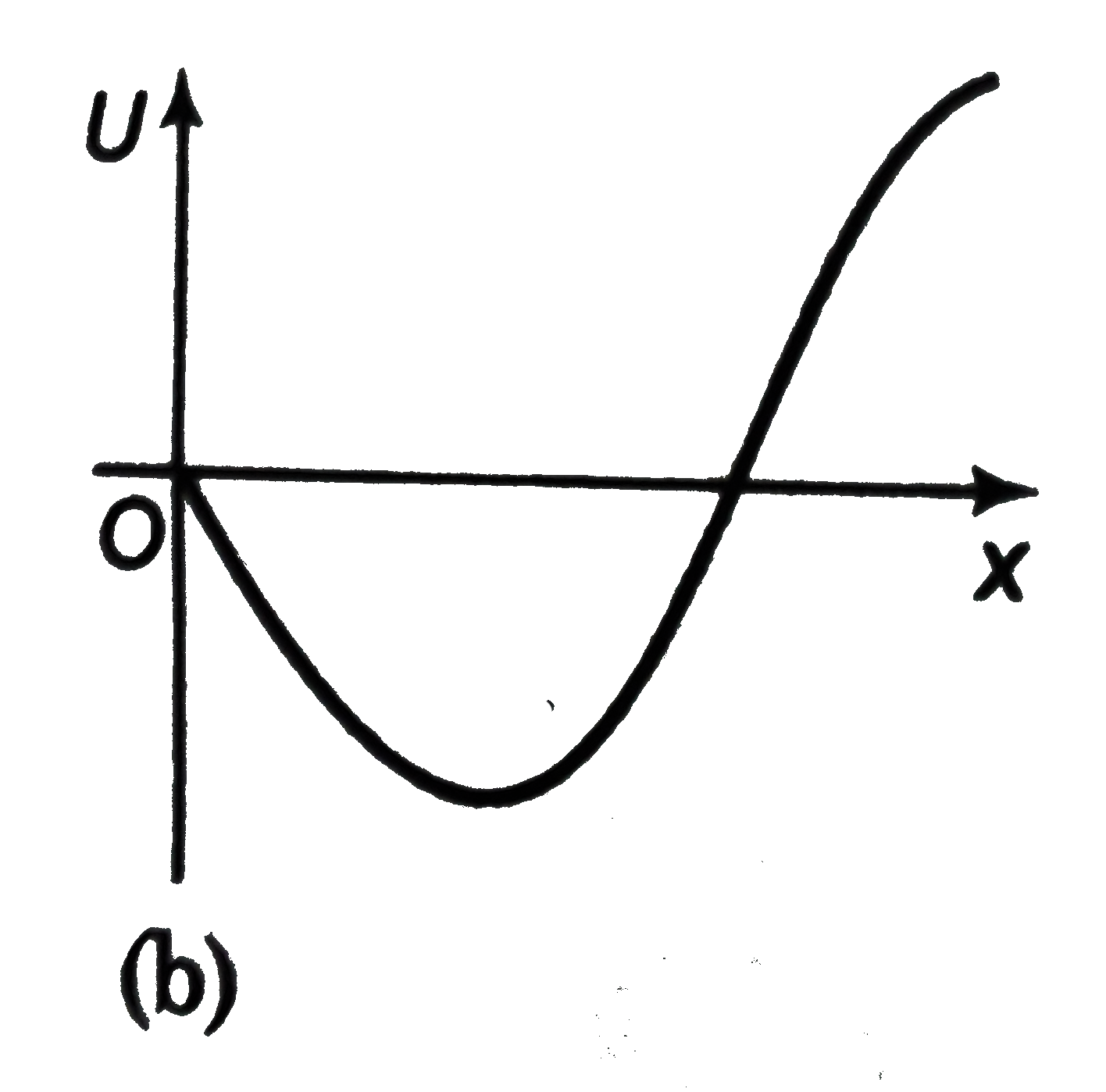 C
C D
D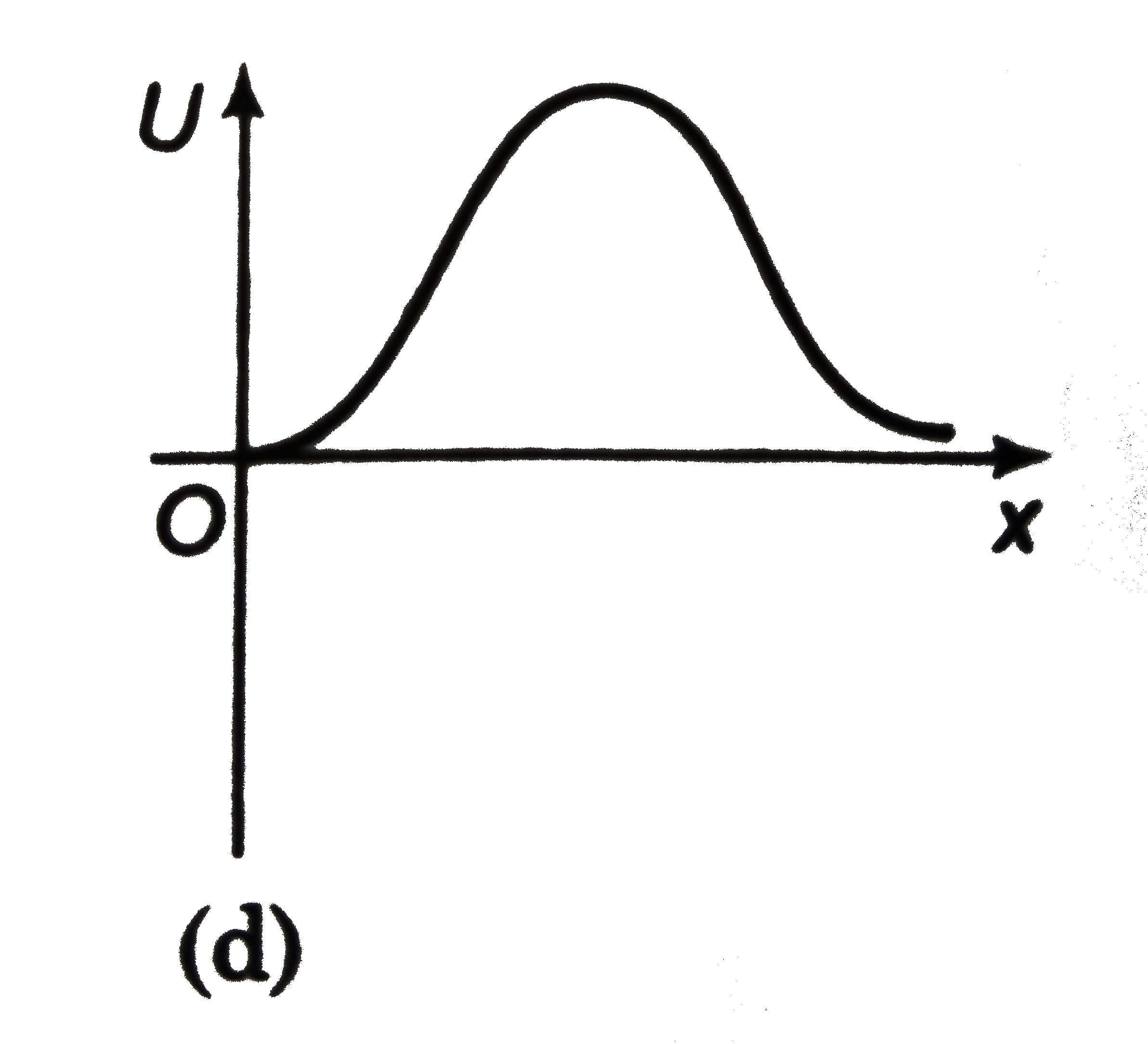
As a particle moves along the x−axis, it is acted upon by a conservative force. The potential energy is shown below as a function of the coordinate x of the particle. Rank the labelled regions accoeording to the magnitude of force, least to greatest.
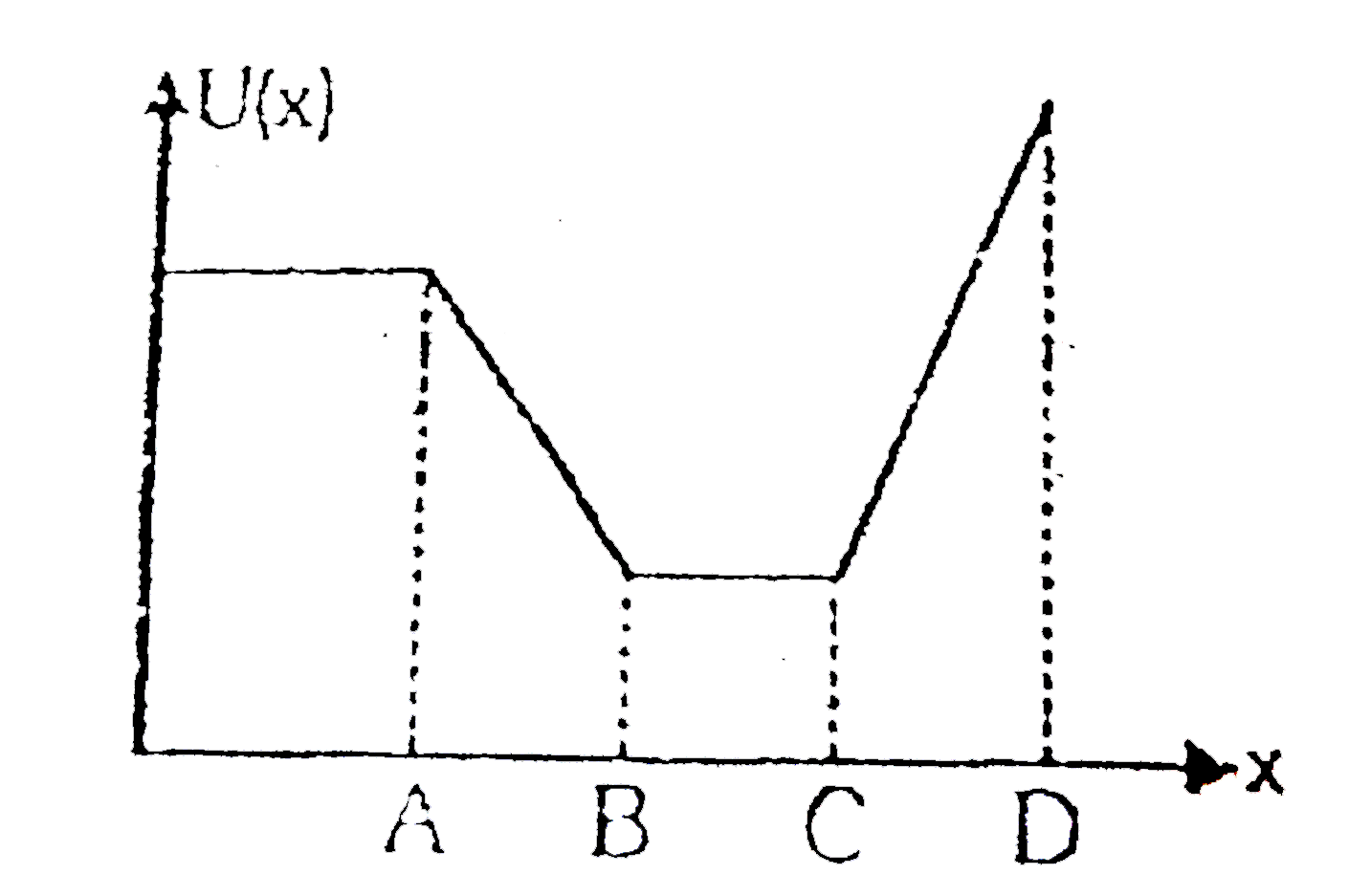 AAB, BC, CDBAB, CD, BCCBC, CD, ABDBC, AB, CD
AAB, BC, CDBAB, CD, BCCBC, CD, ABDBC, AB, CD
A uniform magnetic field B=B0ˆj exists in space. A particle of mass m and charge q is projected towards X-axis with speed v from a point (a,0, 0). The maximum value of v for which the particle does not hit the Y-Z plane is
View SolutionA uniform magnetic field B=B0ˆj exists in space. A particle of mass m and charge q is projected towards X-axis with speed v from a point (a,0, 0). The maximum value of v for which the particle does not hit the Y-Z plane is
View SolutionThe force acting on a particle of mass m moving along the x-axis is given by F(x)=Ax2−Bx.
Which one of the following is the potential energy of the particle?
View SolutionA particle of mass m initially moving with speed v.A force acts on the particle f=kx where x is the distance travelled by the particle and k is constant. Find the speed of the particle when the work done by the force equals W.
View SolutionThe potential energy of a 1kg particle free to move along the x- axis is given by V(x)=(x44−x22)J
The total mechainical energy of the particle is 2J . Then , the maximum speed (in m//s) is
View Solution
